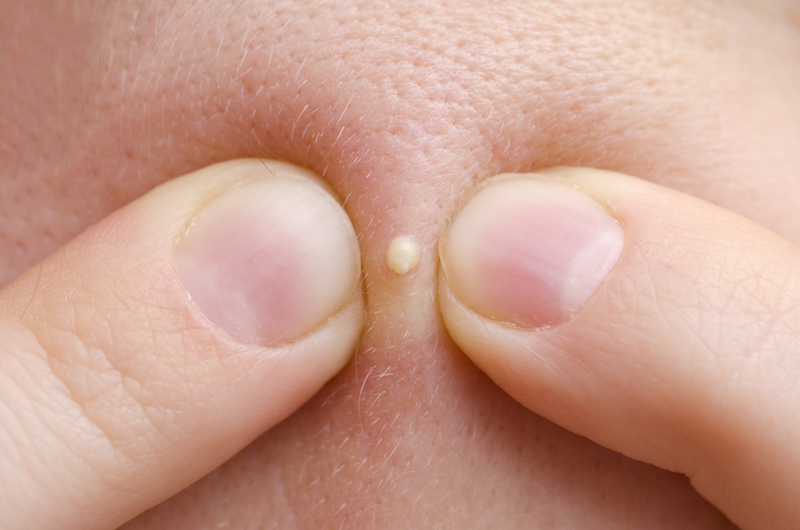The Scientific Reason People Love Pimple-Popping Videos

When pimples ooze, the crowd aahs. But why?
It's no secret that gross-out videos of pimples being popped, cysts being sliced and blackheads being banished from real people's skin are an internet sensation. Dr. Sandra Lee — a dermatologist better known online as Dr. Pimple Popper — can attest to this with her more than 3 million YouTube subscribers and her recently aired TV special on TLC.
"I think watching popping is similar to seeing a scary movie or riding a roller coaster for some," Lee told Refinery29 last year. "You get a rush of euphoria and excitement." [5 Ways Ckin Can Signal Big Health Problems]
Although that explanation may not apply to everyone, Lee's roller-coaster comparison may be on the right track, said Dan Kelly, an associate professor of philosophy at Purdue University and author of the book "Yuck!: The Nature and Moral Significance of Disgust" (A Bradford Book, 2013). The difference is, while roller coasters and horror flicks provide a safe space to engage with fear, pimple-popping videos provide a safe place to engage with another basic human emotion: disgust.
Why gross gets your attention
Much like fear, Kelly said, disgust is a universal human emotion that exists primarily to protect you.
"My take is that there [are] two prime directives of disgust," Kelly told Live Science. "One is to protect us from eating stuff that will poison us. Anything that might be disruptive to your gastrointestinal system is probably going to disgust you."
The second directive is to keep us from getting sick in other ways, Kelly said.
Sign up for the Live Science daily newsletter now
Get the world’s most fascinating discoveries delivered straight to your inbox.
"You can think of it as being part of your behavioral immune system," he said. "If you see someone else and they're sneezing and there's snot running down their nose, that's disgusting. And part of the reason that's disgusting is that there's an observable, reliable indicator that that person is sick with something you don't want to catch. So you want to stay away from them."
In virtue of these directives, Kelly said, it's very easy to get distracted by something that triggers your disgust response. One particularly reliable trigger is bodily fluids, which are "fairly potent disease vectors," Kelly said. This is one reason why people take notice of pimple-popping footage so readily — it's in a person's nature to be on the lookout for things that could make them sick, and gargantuan, pus-filled cysts fit the bill.
"Massive pimples are a phenotypic abnormality," Kelly said, meaning they're not a common trait. "They're indicators that something is wrong," and you may find them disgusting because you want to stay away.
Disgusting loves company
Because of these potential health risks, a strange phenomenon occurs when people acknowledge that something is disgusting: They want to share it. [How To Fix 9 Common Skin Problems]
There's likely a biological explanation for this, too, Kelly said. If disgust is a reaction to something that could make you sick, then sharing the cause of that disgust becomes a valuable way of communicating potential dangers in your environment. "If there's a contaminating illness in the environment, it's in my interest to not catch it, but it's also in my interest to let people know," Kelly said. "Because if they get it, and they're part of my cohort, I might pick it up from them."
To illustrate the point, Kelly pointed to a 2001 study from researchers at Stanford University that tracked the spread of several urban legends across various websites. In every case, the more disgust-inducing a story was, the more widely it spread across the internet.
The mass appeal of pimple-popping videos may result from the same biological impulses: A video still of an oozing cyst might catch your attention because of your innate disgust response, you might watch it to experience that strong emotional frisson without actually being at risk of infection and then you might share it because you just can't resist communicating the feeling.
"Add social media to the mix, and voilà — we have this weird phenomenon," Kelly said.
As for the pop itself? It's likely accompanied by a release of the "feel-good chemical" dopamine, Heather Berlin, an assistant professor of psychiatry at Mount Sinai Hospital in New York, told Refinery29. Some researchers have attributed the satisfaction of seeing a big, gooey pore cleared out to a biological impulse to groom oneself (and one another).
But perhaps one YouTube commenter, responding to Lee's video dubbed "A giant blackhead extracted in an 85 y.o accompanied by her daughter" summed up the phenomenon best: "This is truly disgusting. I love it."
Originally published on Live Science.

Brandon is the space/physics editor at Live Science. His writing has appeared in The Washington Post, Reader's Digest, CBS.com, the Richard Dawkins Foundation website and other outlets. He holds a bachelor's degree in creative writing from the University of Arizona, with minors in journalism and media arts. He enjoys writing most about space, geoscience and the mysteries of the universe.










